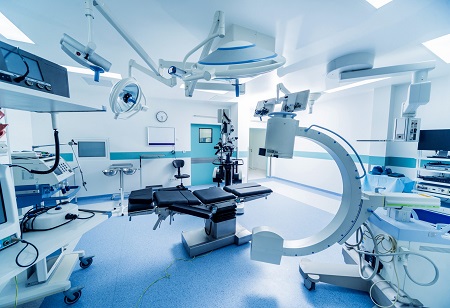Covid-19 pandemic has jolted healthcare systems across the world out of their slumber. Fulfilling the need for affordable and easily accessible healthcare which had been in the to-do list of health departments for too long has now become an immediate priority. One of the first steps towards accomplishing this goal is to strengthen the medical electronics equipment capability of healthcare providers. Hence, the medical electronics industry has been witnessing a double digit growth recently. The medical electronics market has grown at a CAGR of 17 percent in the past few years.
With the implementation of medical electronics technology, the healthcare infrastructure is being reinvigorated starting from digitization of medical diagnosis and therapy to boosting the accessibility of healthcare through telemedicine. However, the major impediment to its fast adoption is the fact that India depends on imports for most of its medical equipment requirements. The major demand which is for cancer diagnostics, orthopaedic and prosthetic equipment, imaging, and electro medical devices, etc. is met by importing them from other countries.
Although steps pertaining to FDI have been taken by the government, the lack of standard regulatory framework and incentive to domestic manufacturers is what is keeping the industry from prospering in India. Currently, the medical device regulation in India applies only to particular product categories. To make matters worse, non-alignment of the current regulations with global standards adds to the woes of manufacturers who want to scale their business and expand their reach to global markets. Then there is a lack of proper product testing infrastructure which is also preventing the sector to tread forward on the path of growth.
“Validation of medical devices forms an integral part of the complete product development lifecycle. It is important that validation is performed throughout the design, manufacturing and release stages to ensure
product quality and thereby, avoid costs associated with warranties and recalls,” said Suhas Tamras, Global Head, Medical Devices and Healthcare Practice at Tata Elxsi.
The Way Forward
Notwithstanding the several challenges and impediments, there are several measures that can be embraced and worked upon to accelerate the market growth. For instance, the government can change tack and be more aggressive in terms of its approach towards shoring up this market. Instead of building a favourable ecosystem only for the domestic market, it can aim higher and try to catapult India to the position of a global manufacturing hub for
medical devices. The kind of innovative acumen Indian professionals have can be used to come up with economical products which can compete with the Chinese ones. This can be made possible by fuelling their intent with proper infrastructure support and regulatory streamlining.
While it might take some time to jumpstart the metaphorical engine of medical device production, it will certainly be a step in that direction. Rising to the level of international production will provide the scale to the Indian manufacturers, which is required for them to become profitable. Catering only to Indian market might take years to break even for new entrants into the market, let alone being profitable.
With an aim of meeting the global demand for medical devices, the most innovative and economical destination for manufacturing is bound to attract more and more investment for R&D which will further strengthen the capability of home grown manufacturers in ways unimaginable. The influx of investment will also help manufacturers upgrade their infrastructure and incorporate state-of-the-art equipment for production of best quality devices. At the same time, the whole initiative will also foster the components market wherein even the components to be used in making medical devices can be made in India. The ancillary industry will grow in tandem with the growth of medical devices market.
The Quest for Affordability
Affordability of medical devices, which is a major concern for the healthcare providers, can also be taken care of by bringing tier 2 and tier 3 cities within the fold of this manoeuvre. By making the components accessible in these cities through an improvement in supply chain, the government can help manufacturers cut their cost of operations significantly. And at the same time, an added advantage will be the industrial growth in these cities. If the process of procurement is made seamless through adoption of digital technology, the manufacturers in these cities would be much better off. With such initiatives, the prices of medical devices would drop significantly and even the lower and medium scale healthcare providers would be able to afford several basic medical devices for which they still rely on manual tests and monitoring.
Unlike pharmaceuticals which can be excelled at in terms of the existing resources and technology at our disposal for making important breakthroughs, medical devices segment is a completely different ball game. Working under the confluence of a plethora of technologies such as electronics, IT, and material sciences, manufacturers must have capability across these domains in order to succeed. Hence, it is time for India to integrate the silos of capital, skilled resources and innovation to make the ecosystem conducive to manufacturing of medical devices.
